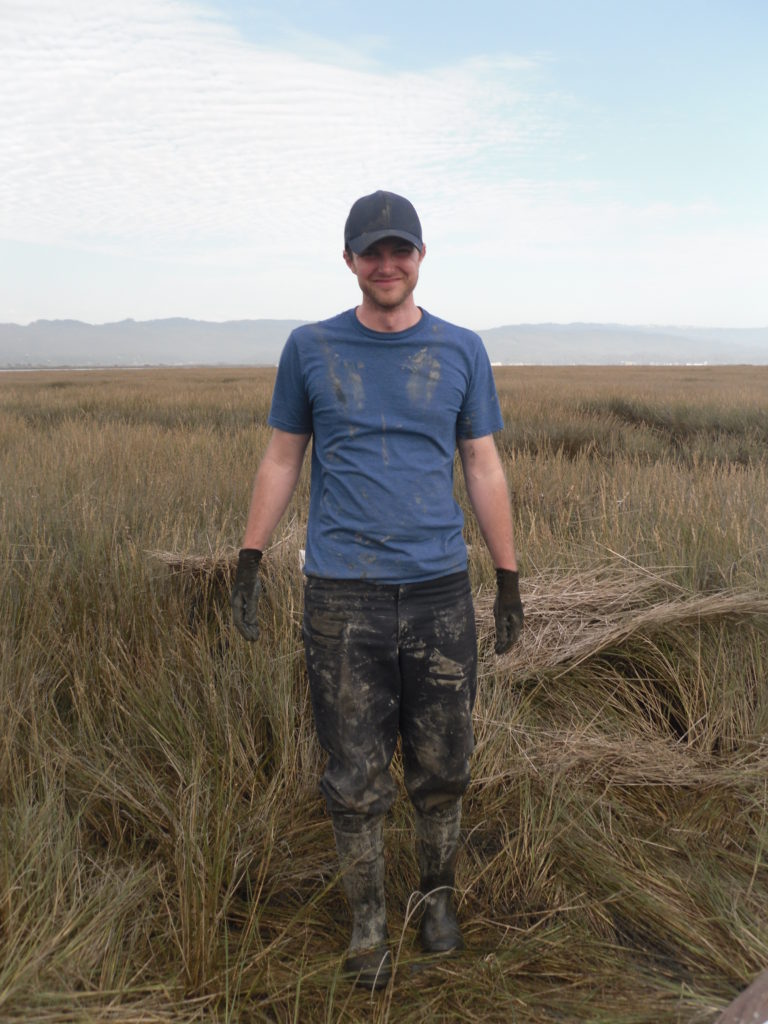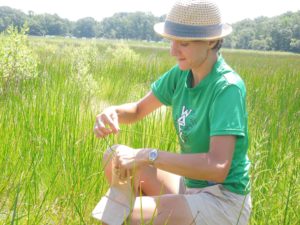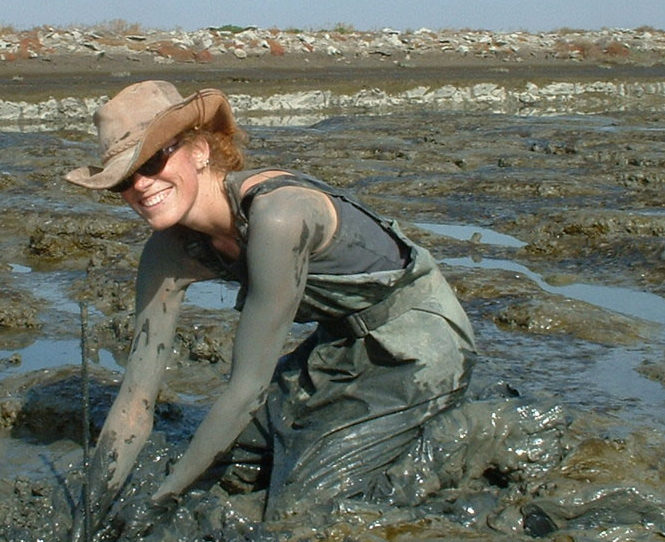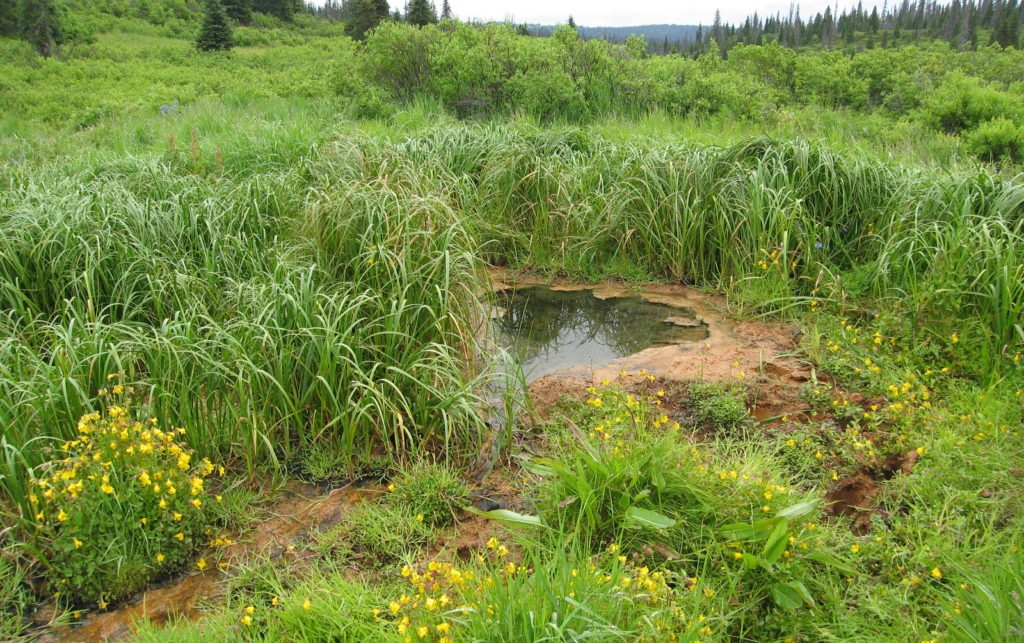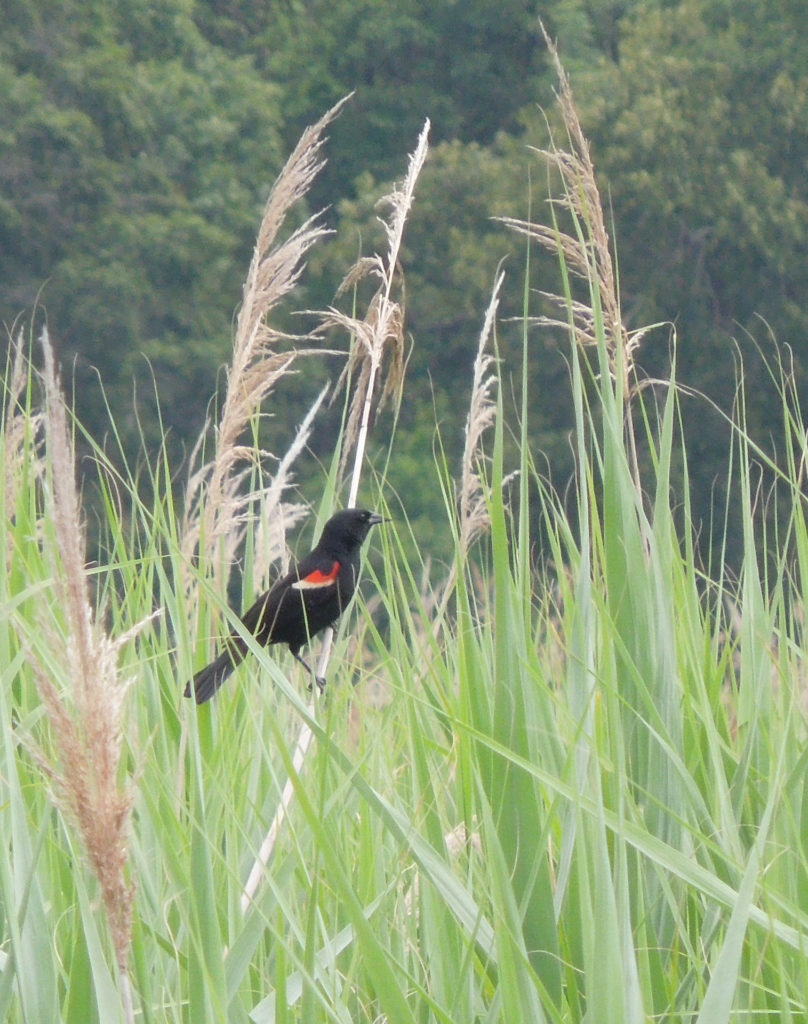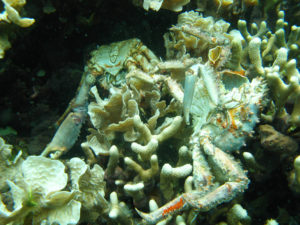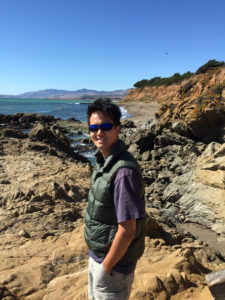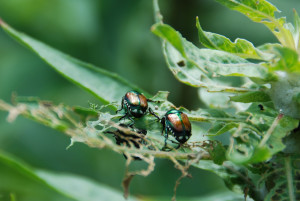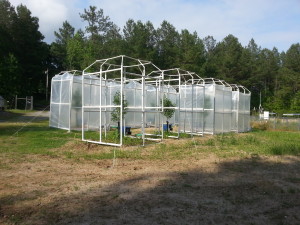That’s why Uzay Sezen carries a crossbow and liquid nitrogen into the forest with him.
by Ryan Greene
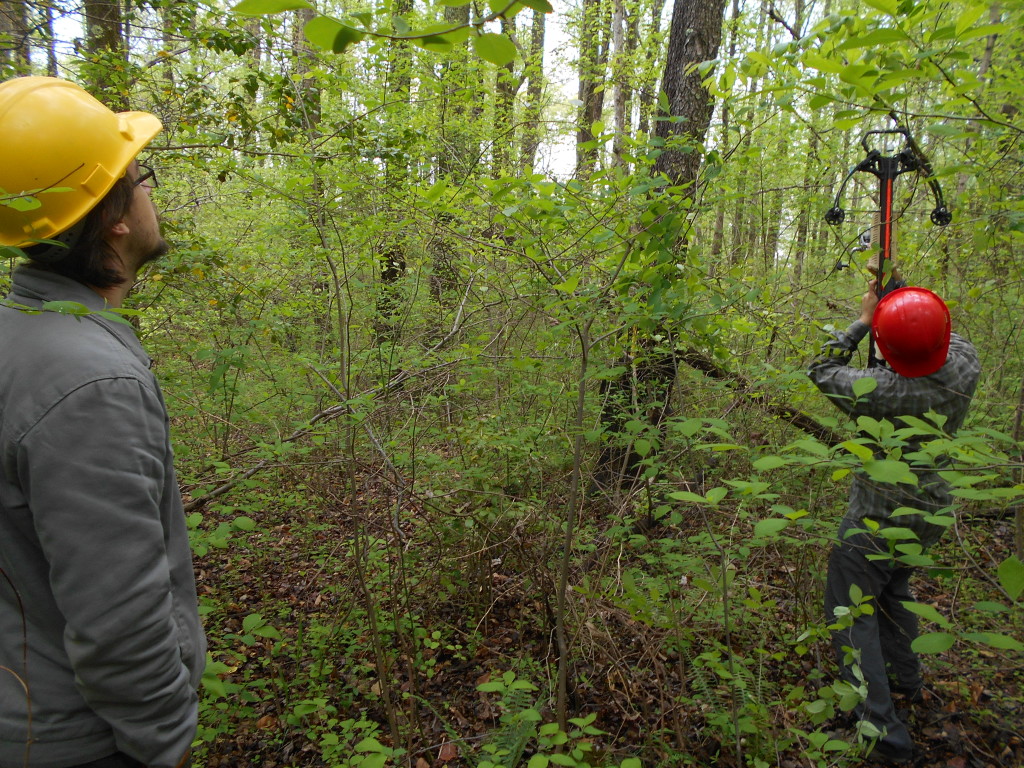
Intern Alex Koure (left) and postdoctoral researcher Uzay Sezen (right) are using a crossbow to get leaf samples from hard-to-reach branches. A fishing line attached to the arrows helps them shake down leaves from the canopy. Credit: Ryan Greene/SERC
Uzay Sezen is a new postdoc at the Smithsonian Environmental Research Center (SERC), and he’s on the hunt for good data. Literally.
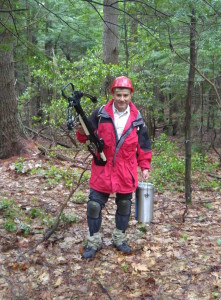
Uzay Sezen with his crossbow and liquid nitrogen in Harvard Forest. Credit: SERC
With senior scientist Sean McMahon and other members of the Quantitative Ecology Lab, Sezen is embarking on a multiyear study which aims to unveil the genetic patterns of tree growth. Their mission: Find out if tree species present at both SERC and Harvard Forest grow in the same way, and whether there are particular genes they express when they grow. Not only will this help us understand how trees respond to day-to-day changes in sunshine, temperature, and rainfall, but it may provide insight into how forests will react (and already are reacting) to global factors like climate change.
Since about 2009, scientists at SERC have been using metal bands called dendrometers to measure how trees grow (within a hundredth of millimeter!) over years, seasons, weeks, and even days. According to SERC technician Jessica Shue, combining these physical measurements with Sezen’s genetic analysis may help reveal what makes some trees in the forest winners and others losers.
“Now that we can look at the genetics, we can look at a much finer scale at what’s causing some trees to be dominant in the canopy, and others of the same species [to be] stuck in the understory,” she says.
How, though, do you ask a tree which genes it’s using?
Click to continue »
